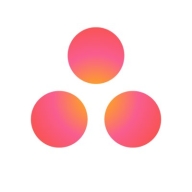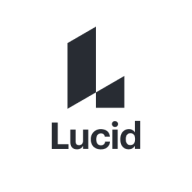

Find out what your peers are saying about Atlassian, Asana, Microsoft and others in Project Management Software.

Asana is web-based software-as-a-service that helps teams coordinate and manage their work. It helps companies move faster by making sure everyone knows the team’s plan and process and who is doing what by when.
Each user can create projects using a list, board, calendar, or timeline view. Within each project, users can add tasks, subtasks, sections, comments, attachments, start and due dates, and custom fields. Project and task followers get notifications on changes or comments on the project and/or task in their Inbox. Individual users can see all of the tasks they're responsible for across all of their projects in a view called My Tasks.
Asana is available in English, French, Spanish, German, and Portuguese.
Lucidspark is a virtual whiteboard where teams can bring their best ideas to light. Collaborate in real time, no matter where you are. Lucidspark helps people organize notes and scribbles and turn them into presentation-ready concepts. When it’s time for next steps, teams can develop workflows and process documents to turn ideas into reality. Features include: integrations, infinite canvas, sticky notes, freehand drawing, chat, templates, timer, voting, and more.
With Lucidspark, you can not only brainstorm ideas as a team but then refine and organize those ideas to drive action. Features like assisted grouping and Lucidchart import/export help users turn ideas into plans and strategies.
Lucidspark is part of the Lucid suite, the only visual collaboration suite that helps teams see and build the future from idea to reality. Users can start ideating in Lucidspark and then seamlessly move to Lucidchart and Lucidchart Cloud Insights to complete the full project lifecycle and make their ideas a reality.
We monitor all Project Management Software reviews to prevent fraudulent reviews and keep review quality high. We do not post reviews by company employees or direct competitors. We validate each review for authenticity via cross-reference with LinkedIn, and personal follow-up with the reviewer when necessary.